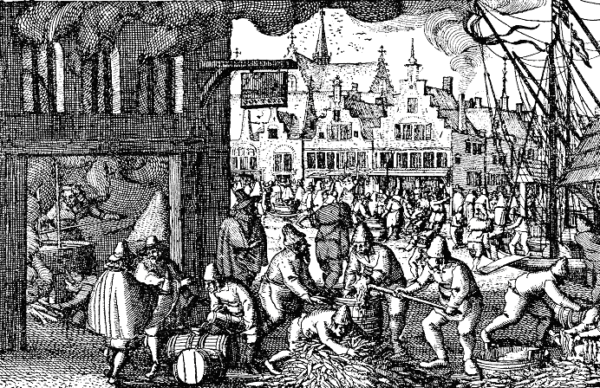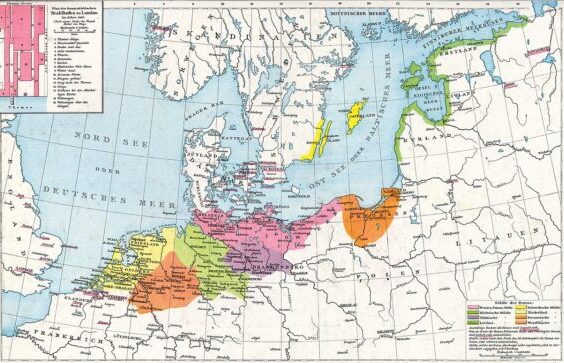Childhood
In 1306 Amsterdam is recognized as a city by its feudal lord, the bishop of Utrecht Guy of Avesnesin who grants Amsterdam its first city charter and the rights that went with it. After the death of the Bishop of Utrecht in 1317, Amstel-land & Amsterdam were inherited by the Bishop’s nephew Count Willem III making the fief of Amsterdam part of the County of Holland once again.
As an integral part of Holland, the city grew rapidly mainly due to the trade of beer & herring, its two staple commodities. The exemption from extra taxes helped Amstel-dammers to quickly evolve into effective tradesmen. In 1323 Amsterdam obtains exclusive rights for importing beer from Hamburg, acquiring an important monopoly that would form the basis for a wider collaboration with the mighty Hanseatic League in the future.


At the same time, the herring trade boomed based on the invention of herring-curing, a technique that meant removing the fish’s intestines directly after they were caught to keep them fresh for a longer period. This allowed fishermen to catch more fish and thus make more profit.
In 1345 the so-called Miracle of Amsterdam makes the city an important pilgrimage town and helps it grow considerably in size in a few years. The miracle that was officially recognized by the Roman Catholic Church, a large pilgrimage chapel, the Heilige Stede (Holy Site) was built on the site and the Heiligeweg (Holy Way) was constructed as a new pilgrimage route leading to it.



